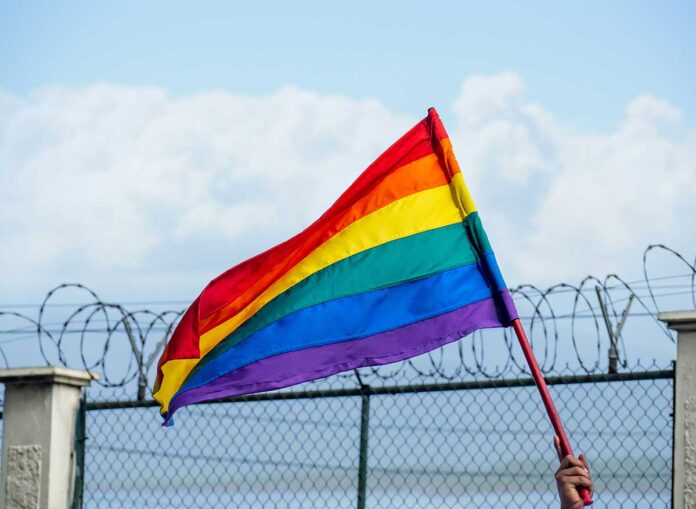Unless otherwise noted, names have been altered to protect the privacy of formerly incarcerated persons.
Throughout the summer of 2020, Nadia Martinez watched the social justice protests on TV. She would have liked to have been part of those protests, but she couldn’t risk it. Martinez was on probation and living in a halfway house after spending three years in the State Correctional Institute at Muncy.
“I kept waiting for our names to come up,” Martinez said in an interview with PGN. “You know — gay people, queer people, trans folk. All of us. Too many of us in jail — you know? And guess what color we are?”
Martinez was convicted of manslaughter in 2015 when she was 20. She says she and her female partner were assaulted outside a speakeasy in Philadelphia’s Feltonville neighborhood, and she got into a fight with the man who attacked them. The man was thrown back against the sidewalk, hit his head, and died after some days in the hospital.
“There never should have been any sentence at all,” says Martinez, who is still angry at what she calls “the injustice.”
She explained, “He attacked us. He went after my girl. He was trying to touch her. The way he came at us and the things he said — it was self-defense. Absolutely.”
Martinez, who did not have a violent record, entered into a plea deal. Five years prison, seven probation. Martinez is not wrong; the sentence was longer than average for someone with no violent criminal history. She attributes it to “being a hardcore stud” — a butch lesbian.
Her girlfriend pled to misdemeanor assault and received no jail time, just probation.
There are approximately 219,000 incarcerated women in the U.S. according to a November 2018 report by the Prison Policy Initiative, and the rate of incarceration of women in the U.S. is at an historic and global high, with 133 women in correctional facilities per every 100,000 female citizens.
Among those women, a disproportionate number are lesbian, bisexual and trans. Data from the 2011-2012 National Inmate Survey, which interviewed a representative sample of people in U.S. prisons and jails found that rates of incarceration for lesbian, gay and bisexual people were 1,882 per 100,000, which is more than three times the “already high” incarceration rate of 612 per 100,000, according to the study in the American Journal of Public Health.
The study found LGBT individuals or those who reported a same-sex sexual experience before arrival at the jail or prison represented 9.3 percent of all men in prison, 6.2 percent of men in jail, 42.1 percent of women in prison and 35.7 percent of women in jail.
The disproportionality of lesbian, bisexual and queer women in prisons is stunning. (Trans people were not reported in this data.)
Compared with cis-het inmates, sexual minorities were more likely to have been sexually victimized as children, to have been sexually victimized while incarcerated, to have experienced solitary confinement and other sanctions, and to report current psychological distress.
The study concluded that “There is disproportionate incarceration, mistreatment, harsh punishment and sexual victimization of sexual minority inmates, which calls for special public policy and health interventions.”
But nearly a decade after this widely reviewed and reported study was published, there has been no such intervention.
In 2021, the Prison Policy Initiative states: “The data is clear: LGBTQ people are overrepresented at every stage of the criminal justice system, starting with juvenile justice system involvement. They are arrested, incarcerated, and subjected to community supervision at significantly higher rates than straight and cisgender people. This is especially true for trans people and queer women. And while incarcerated, LGBTQ individuals are subject to particularly inhumane conditions and treatment.”
Martinez was one of thousands of such queer women.
And, as Martinez suggested, the rates of confinement for women is disproportionate to race. According to the Philadelphia Reentry Coalition, Black women are incarcerated at two times the rate of white women, and Latinx women like Martinez are incarcerated at 1.2 times the rate of white women.
The Philadelphia Department of Prisons gives these demographics: In Philadelphia, the city’s female population is 40% white, 45% Black and 12% Latinx, but the female population in Philadelphia jails is 22% white, 57% Black and 18% Latinx.
According to the Vera Institute of Justice, since 1970, the rate of incarceration in America has expanded more than fourfold, and the U.S. leads the world in incarcerations. Racial disparities in incarceration remain strikingly wide, and women constitute a rising number of those behind bars.
Over the past quarter century, there has been “a profound change in the involvement of women within the criminal justice system,” according to The Sentencing Project. This is, they note, “the result of more expansive law enforcement efforts, stiffer drug sentencing laws and post-conviction barriers to reentry that uniquely affect women.”
And between a third and a half of women in prison have had same-sex relationships prior to being incarcerated.
Study after study concludes that women in prison have experienced victimization, unstable family life, school and work failures, and substance abuse and mental health problems. Social factors that marginalize their participation in mainstream society and contribute to the rising number of women in prison include poverty, being a member of a minority group, and homelessness.
All of these things can be true for queer and trans women in prison.
Prior to the decriminalization of same-sex relationships and consensual sodomy, there were significant cases of women and men arrested solely for being gay. Pat Ryan was only 16 the first time she was arrested in a raid on a Philadelphia gay bar in 1965.
“I was there with three friends. I was the only one underage,” she explained. “There was a raid on the club we were in at 13th and Locust. I was so scared.”
Ryan and her friends were booked on disorderly conduct charges and public indecency. Ryan was also charged with underage drinking. It would be the beginning of Ryan’s brushes with law enforcement as what she calls a “classic butch.” There would be more raids at more clubs in Center City and South Philadelphia and then a few arrests for what she called “walking while butch.”
Ryan says there was a lot of illegal activity in the gay bars and clubs in the 1960s, 70s, and 80s when she worked in and around the bar scene as a bouncer and bartender. “I got thrown out of my home early,” she says. She was also forced to quit school.
“And it was hard to get a job as a bull dyke back in the day. So you did a little this, a little that and you hoped you didn’t get caught. All the clubs were Mafia owned and run. It was just one big criminal enterprise and gay and trans people were the victims because there was nowhere else for us to go.”
The irony, Ryan says, is that the very places LGBTQ people went to feel safe were also places where they were often at risk. Ryan recounts how all the femme lesbians and trans women she knew had been solicited by police for sex. And many were victims of sexual assault.
“A raid on a bar could mean getting forced by a cop,” she said. “It was pretty ugly back then. It was the power they had over us.”
Ryan spent nine months in the Youth Study Center and three stints in Muncy on possession and assault charges throughout the 1970s, time she says was “dragged out and excessive” and which made it harder and harder to reenter society when she got out, including with a criminal record.
“I was almost 40 before I had what folks would call a ‘real’ job, where I got a paycheck instead of cash under the table,” she says.
That was after she got her GED and got an associate’s degree at Community College of Philadelphia. “I turned my life around,” she says with a wry laugh. “But the criminal justice system did everything possible to turn me into a career criminal. Just because I am gay.”
For LGBTQ people, criminal justice involvement often starts at a young age as it did for Ryan. LGBTQ youth are vastly over-represented in the juvenile justice system. Researchers estimate that 20% of youth in the juvenile justice system are lesbian, gay, bisexual, questioning, gender nonconforming, or transgender compared with 4% to 6% of youth in the general population.
The same research shows that 40% of girls (those assigned female at birth) in the juvenile justice system identify as LBQ and/or gender nonconforming. Those statistics match up with those for the studies on adult females in prison.
This disproportionality is due to what Ryan explained about her own life — leaving or being forced out of their homes due to their orientation or identity then leads directly to jail. LGBTQ youth are often caught up in criminalized behaviors such as drug sales, theft or survival sex, which increase their risk of arrest and incarceration.
In part two of this series, PGN will look at the criminalization of lesbians and trans women; what happens in prisons, jails, and solitary confinement; and a former inmate deciding to fighting back.

